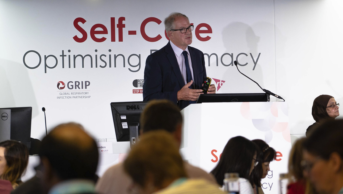
Shutterstock.com
The British Pharmaceutical Students’ Association (BPSA) has called for intake at schools of pharmacy to mirror the number of pharmacy preregistration places on offer — which may mean schools capping their student intake.
Addressing the Scottish and English Pharmacy Boards in April and June 2017, BPSA spokesperson Tom Byrne said it was “imperative” that steps were taken to link student intake to the number of preregistration places on offer.
The opening of four new schools of pharmacy since 2013 means, the BPSA says, that “the number of preregistration training places has to rise in order to meet demand, unless intake is moderated at other schools of pharmacy”.
Figures provided to the General Pharmaceutical Council (GPhC) from schools of pharmacy show that in 2016, 2,839 students graduated with an MPharm degree.
In the same year, 689 hospital placements were available across England and Wales, as well as 15 industrial placements.
Health Education England was unable to provide a figure for community pharmacy placements in 2016, but the BPSA believes there is a “fine balance” between the numbers of graduates and preregistration placements.
Places in Scotland
In Scotland, the number of pharmacy graduates already outnumbers the number of preregistration places by at least 46. In the 2016–2017 training year, there were 170 NHS Education for Scotland-funded preregistration places in the Pre-Registration Pharmacist Scheme, and a further 27 places funded by training providers.
In 2016, 110 students graduated with an MPharm degree from Robert Gordon University, and 186 from the University of Strathclyde.
Earlier in 2017, the Royal Pharmaceutical Society (RPS) said, in a response to a Scottish government consultation on workforce planning, that “the number of preregistration trainee placements is insufficient”.
The RPS added that “the number of preregistration trainee pharmacist placements in Scotland is considerably less than the number of pharmacy graduates being produced by Scottish universities… Scotland is a net exporter of pharmacy graduates”.
Concerns have been voiced in the past among pharmacists that many Scottish pharmacy graduates are taking up already limited preregistration places in England.
Call for collaboration
The RPS went on to say that “schools of pharmacy, employers and NHS Education for Scotland should work together to narrow the gap between student intake [and] the number of preregistration trainee pharmacist placements”.
In May 2017, Scotland announced it would be introducing the five-year integrated degree.
But concerns remain for England and Wales, in which only two pharmacy schools — the University of Nottingham and the University of East Anglia — offer degrees with integrated preregistration training.
“Should a shortfall in preregistration places emerge, some graduates would be denied the opportunity to undertake preregistration training and progress towards registration as a pharmacist in this country”, the BPSA says.
“Graduates from the MPharm have invested four years of time and money to study for their degree, and should not be denied the opportunity to complete their training and enter the pharmacy profession.
“Greater efforts must be made to link the number of pharmacy students to workforce requirements.”
This article was updated on July 31 2017 to include the number of pharmacy students that graduated from the University of Strathclyde in 2016.


